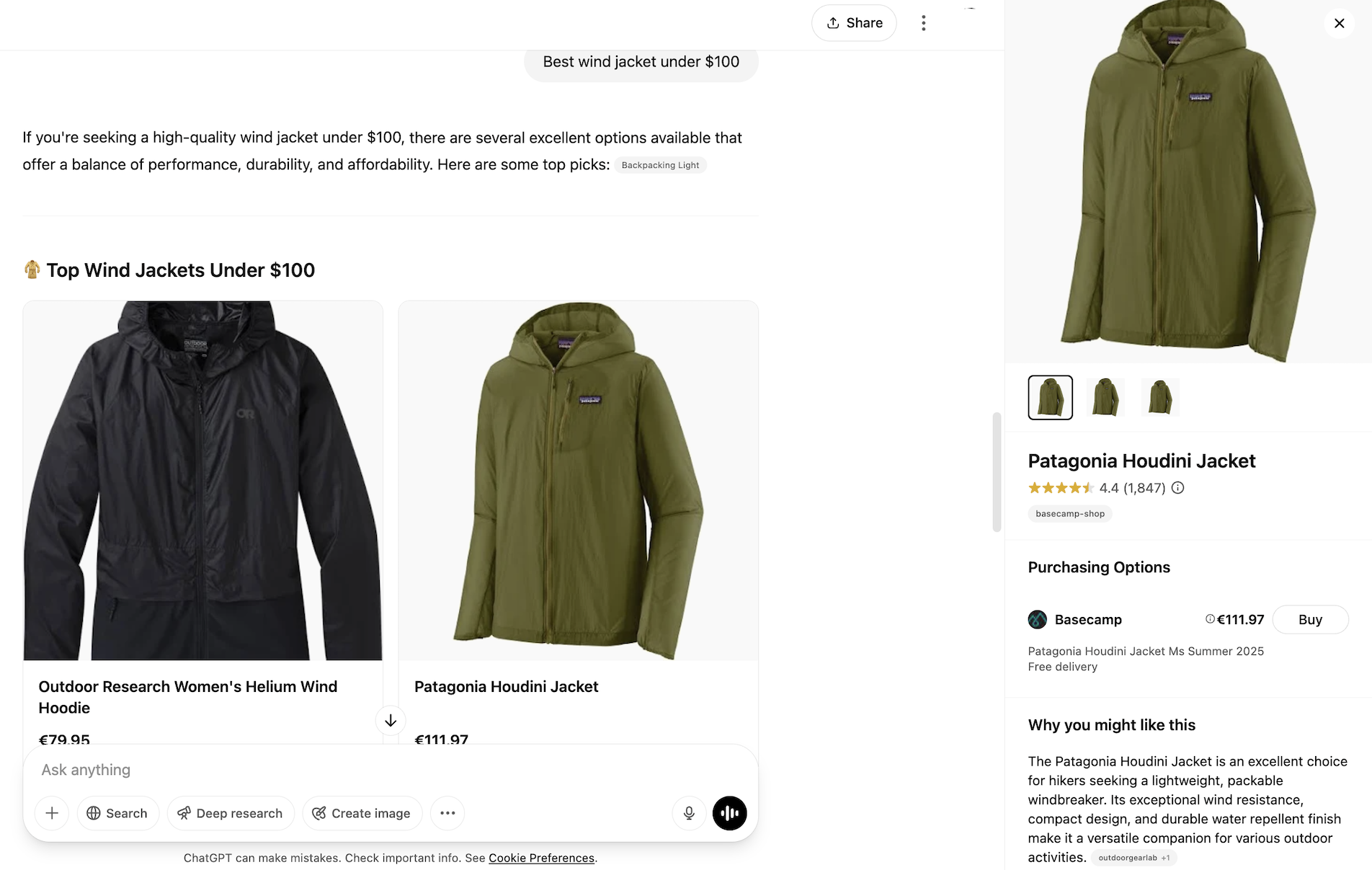Optimize Product Schema for ChatGPT Shopping: Boost Your AI Visibility

The e-commerce landscape is undergoing a seismic shift with OpenAI's recent introduction of shopping features to ChatGPT Search. This new AI-powered shopping experience—now available to all users regardless of subscription status—is changing how consumers discover and purchase products online. As a merchant, understanding how to optimize your product listings with proper schema markup for this new AI-driven environment is crucial for staying competitive.
Why Schema Markup Matters for AI Shopping
ChatGPT's shopping feature has quickly become a powerful product discovery tool, with OpenAI reporting over 1 billion web searches in just one week. Unlike traditional search engines with their algorithm-driven results and paid placements, ChatGPT presents product recommendations based purely on structured data and relevance to the user's natural language queries.
The key difference from traditional shopping search: ChatGPT does not show sponsored results or accept payment for product placement. Instead, it relies entirely on structured metadata to determine which products to recommend.
The Crucial Role of Structured Data
Why Schema.org Markup Matters for AI Shopping
ChatGPT and other AI shopping tools rely on structured metadata to understand:
- What your product is
- Its key features and specifications
- Pricing information
- Availability status
- User reviews and ratings
- Visual content
Without proper schema markup, AI shopping platforms may struggle to correctly categorize and recommend your products, essentially making them invisible to these powerful new sales channels.
Essential Schema Types for AI Shopping Optimization
1. Product Schema
Ensure your product pages include complete schema.org/Product markup with these essential properties:
- name: Clear, descriptive product title
- description: Detailed product description
- brand: Your brand information
- offers: Pricing, availability, and condition
- aggregateRating: Overall rating data
- review: Individual customer reviews
- image: High-quality product images
Example of proper Product schema implementation:
{
"@context": "https://schema.org/",
"@type": "Product",
"name": "Ergonomic Office Chair with Lumbar Support",
"description": "Adjustable office chair with breathable mesh back, lumbar support, and 360-degree swivel.",
"brand": {
"@type": "Brand",
"name": "ComfortPlus"
},
"offers": {
"@type": "Offer",
"url": "https://www.example.com/chair",
"priceCurrency": "USD",
"price": "199.99",
"availability": "https://schema.org/InStock"
},
"image": "https://www.example.com/images/chair.jpg",
"aggregateRating": {
"@type": "AggregateRating",
"ratingValue": "4.8",
"reviewCount": "175"
}
}2. Organization Schema
While Product schema is essential for individual product pages, Organization schema provides critical context about your business as a whole. This helps AI shopping platforms understand who you are as a merchant and build trust in your offerings.
Implement Organization schema on your homepage with these key properties:
- name: Your business name
- url: Your website URL
- logo: Your company logo
- description: Brief company description
- contactPoint: Contact information
- sameAs: Links to your social media profiles
Example of Organization schema implementation:
{
"@context": "https://schema.org",
"@type": "Organization",
"name": "Your Company Name",
"url": "https://www.example.com",
"logo": "https://www.example.com/images/logo.png",
"description": "Premium office furniture for ergonomic workspaces.",
"contactPoint": {
"@type": "ContactPoint",
"telephone": "+1-555-123-4567",
"contactType": "customer service",
"email": "[email protected]"
},
"sameAs": [
"https://www.facebook.com/yourcompany",
"https://www.instagram.com/yourcompany",
"https://www.linkedin.com/company/yourcompany"
]
}3. FAQ Schema
FAQ schema is particularly valuable for product pages as it directly addresses common customer questions—exactly what users often ask in ChatGPT. Implementing FAQ schema helps AI shopping assistants quickly find and display relevant answers about your products.
Add FAQ schema to your product pages with questions and answers that address:
- Product features and specifications
- Compatibility with other products
- Usage instructions
- Warranty information
- Shipping and returns policies
Example of FAQ schema implementation:
{
"@context": "https://schema.org",
"@type": "FAQPage",
"mainEntity": [
{
"@type": "Question",
"name": "What is the weight capacity of this office chair?",
"acceptedAnswer": {
"@type": "Answer",
"text": "This ergonomic office chair has a weight capacity of 300 pounds (136 kg)."
}
},
{
"@type": "Question",
"name": "Does this chair come with a warranty?",
"acceptedAnswer": {
"@type": "Answer",
"text": "Yes, this chair includes a 5-year manufacturer warranty covering all mechanical parts."
}
}
]
}Enhance Product Attribute Coverage
AI shopping platforms excel at filtering and matching products based on specific attributes. Ensure your structured data includes comprehensive details about:
- Size, dimensions, and measurements
- Materials and components
- Technical specifications
- Compatibility information
- Features and benefits
- Sustainability credentials
- Shipping and return policies
The more specific information you provide through structured data, the better AI shopping assistants can match your products to relevant customer queries.
How to Test Your Schema Implementation
After implementing schema markup, you'll want to verify its effectiveness. Our AIShoppingOptimizer tool can help by:
- Analyzing your product URLs for proper schema implementation
- Validating your schema.org markup
- Testing how AI shopping platforms interpret your product schema
- Providing actionable recommendations for improvement
- Simulating how your products might appear in AI shopping results
The Future of AI Shopping Schema
As AI shopping features continue to evolve, staying ahead of schema markup best practices will be essential. Industry experts predict several emerging trends:
- Expanded schema types: New schema types and properties may be developed specifically for AI shopping platforms
- More detailed product attributes: Growing demand for granular product specifications to match increasingly specific customer queries
- Schema connections: Greater emphasis on creating relationships between products, categories, and related content
Conclusion
Implementing comprehensive schema markup is now essential for visibility in ChatGPT's shopping results and other AI-powered shopping platforms. By properly adding Product, Organization, and FAQ schemas to your site, you can significantly improve your chances of being recommended to potential customers using these new shopping tools.
Take the first step toward optimizing your product listings for AI shopping today by analyzing your current schema implementation with our AIShoppingOptimizer tool.